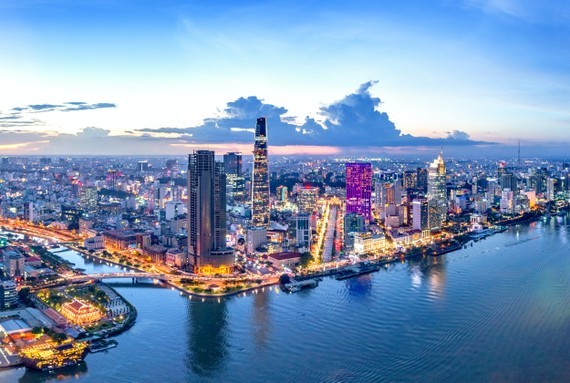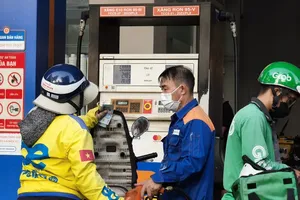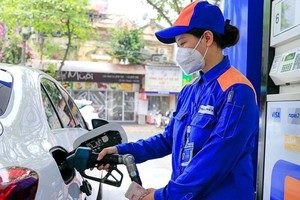 Illustrative photo
Illustrative photo
In this time, more than 16,390 enterprises have been either totally dissolved or have temporarily stopped operating. The workforce in the health and education sector has now the highest unemployment rate in decades and flooding of city areas has increased. Foreign Direct Investment (FDI) is currently even lower than many other provinces and there are now many sectors that have not yet resumed operations after the Covid-19 pandemic. Nonetheless, Ho Chi Minh City still has some areas that can bring some cheer post-pandemic.
Rapid recovery
Ho Chi Minh City is now focused on rectifying disruptions in the overall supply chain from circulation to production, distribution, and consumption. At the same time, city leaders want to ensure an adequate supply of essential goods and minimize unnecessary supply chain disruptions. The city is prioritizing resource support for economic sectors, and accelerating exports.
Accordingly, in the first months of the year the city's economy recorded many positive recovery signs. Over 98 percent of production facilities in the area have reopened factories and production workshops, allowing for smooth and uninterrupted circulation of goods. The growth rate of Gross Regional Domestic Product (GRDP) in the first quarter also increased by 1.88 percent.
After a drastic fall in the third and fourth quarter of 2021, with negative 24.97 percent and 11.64 percent growth respectively, the city's economy has now achieved a positive growth rate. Total export turnover of goods of city enterprises through border gates nationwide in the first four months of the year is estimated at US$13.9 bln, up 3.6 percent over the same period last year.
Meanwhile, the total import turnover of goods in the province in four months is estimated at US$36.4 bln, up 122.6 percent over the same period. Attracting Foreign Direct Investment (FDI) in the first months of the year was not as expected, but still reached US$ 1.28 bln. These signs show that Ho Chi Minh City is recovering quickly and much earlier than expected. The city has been rated by the World Bank as one of the cities with the best resilience in the dual crisis of the Covid-19 pandemic and global inflation.
Transition to digital society
In 2022, Ho Chi Minh City will implement digital transformation in a comprehensive way, and develop a digital economy and a digital society. The city will promote information technology applications as well as build a digital governance system. There will be efforts to synchronously design, build, and put into operation an integrated and interconnected system of large databases, especially data on population, planning, healthcare, education, insurance, business, land, and housing, which will serve the operations of the city administration and the population.
Currently, Ho Chi Minh City has officially connected the national data sharing and integration platform to the shared data warehouse in the city. More than 900 units in the area, including state agencies, corporations, and non-business units have linked electronic documents through an integrated and data-sharing platform. The areas of traffic, health, education, training, environment, urban planning, and security have also deployed many applications to serve professional works and provide services to the people.
The goal is to build a digital economy by 2025 so that Ho Chi Minh City can become a smart city providing modern services and maintaining the role of the economic locomotive and growth engine of the Southern Key Economic Zone and the whole country. Ho Chi Minh City plans to lead the way in innovation and offer a good quality of life to the people. By 2030, Ho Chi Minh City aims to become a modern industrial and service city, a cultural city, a leader in the digital economy with a digital society and a digital government. Ho Chi Minh City also aims to be the center of economy, finance, commerce, science, technology, and culture in Southeast Asia. Ho Chi Minh City plans that by 2025, the digital economy will contribute up to 25 percent of its GRDP, and 40 percent GRDP by 2030.
Better tourism
Compared to Phu Quoc Island, Hoi An, and Nha Trang, Ho Chi Minh City is not the most attractive spot on the tourist map and has even fallen lower than before the Covid-19 pandemic. However, there are strong efforts to increase and attract more tourists to Ho Chi Minh City. Total revenue in June from the tourism sector reached VND 10,172 bln, up 233 percent over the same period in 2021. Domestic tourists to the city reached 2.11 million, up 276.9 percent over the same period last year and international visitors numbered 215,892. In the first six months of the year, the total revenue of the tourism industry in Ho Chi Minh City reached VND 49,681 bln, up 29.9 percent over the same period in 2021. Domestic tourists numbered 11.08 million, up 43.1 percent over the same period, and international tourists were estimated at 477,982 tourists.
Currently, Ho Chi Minh City is offering several interesting tour programs to attract visitors such as an aerial view of the city from above by helicopter, yachting on the Saigon River, green tourism in Can Gio, and a city tour at night-time. These tourism products are of much interest to many travelers visiting the city for the first time.
Technical infrastructure
One of the bottlenecks causing problems for Ho Chi Minh City is the lack of a technical infrastructure, which is currently weak and inconsistent. Therefore, the People's Committee of Ho Chi Minh City has identified the project "HCMC transport infrastructure development plan for 2020-2030" as one of the most powerful breakthrough projects for the future.
The city estimates that the total investment for this project will be VND 970,654 bln, in which the capital will be about VND 399,729 bln and other costs will be about VND 570,925 bln. From now until 2025, the city will focus on highway projects such as Ho Chi Minh City-Moc Bai, Ho Chi Minh City-Long Thanh-Dau Giay, and Ho Chi Minh City-Trung Luong, as well as focus on National Highways 1, 13, 22, 50 and closed Ring roads 2, 3.
During this phase until 2025, the metro No. 1 line from Ben Thanh to Suoi Tien will be completed and No. 2 line from Ben Thanh to Tham Luong section and No. 5 line from Bay Hien Crossing to Saigon Bridge will be accelerated. Ho Chi Minh City will also invest in completing key intersections of An Phu, My Thuy, Go Dua, Linh Xuan in Thu Duc City, the intersection of four communes in Tan Phu district, and the six intersections of Dan Chu Square in District 3.
Large-scale bridges across the river are also being prioritized such as Thu Thiem 3, 4, Cat Lai, and Can Gio bridges. Among the pending projects, there are start-up projects, capital arrangement projects, and projects still on paper. Ho Chi Minh City is showing a strong determination in creating momentum and breakthroughs in order to turn the city into a vibrant economic-financial center of Southeast Asia.
























